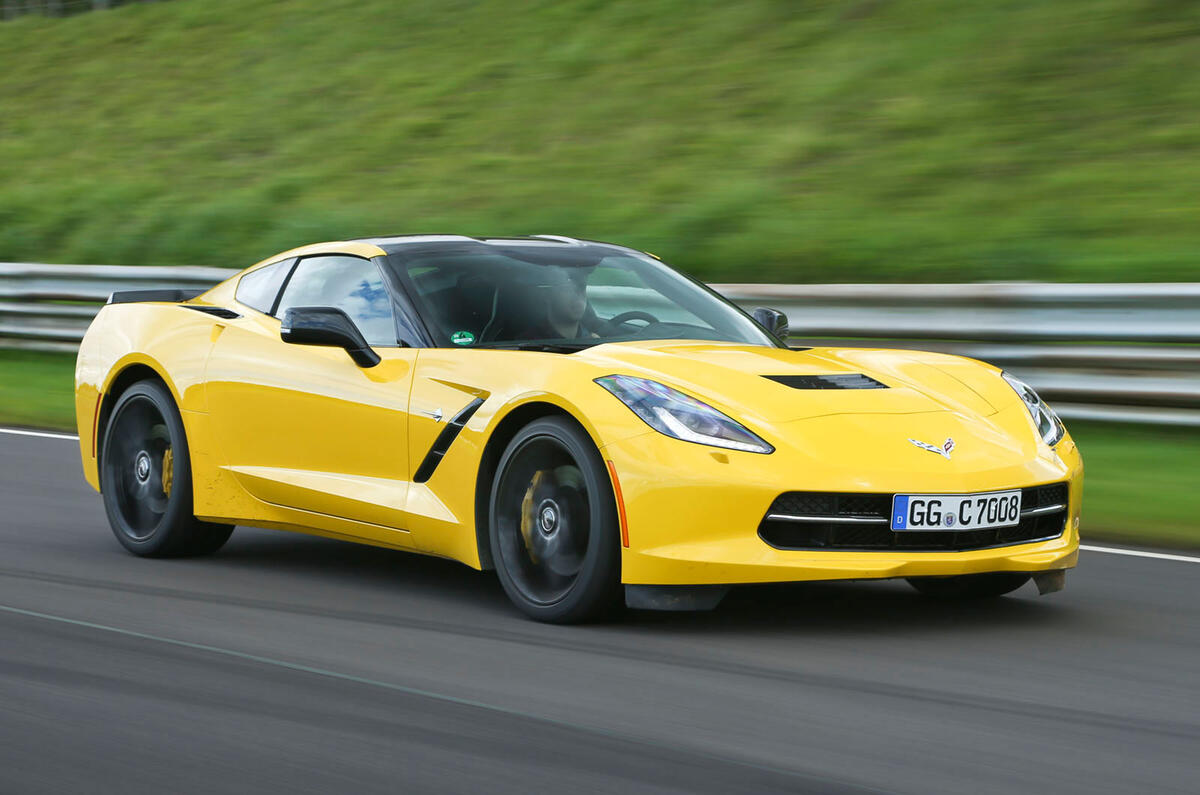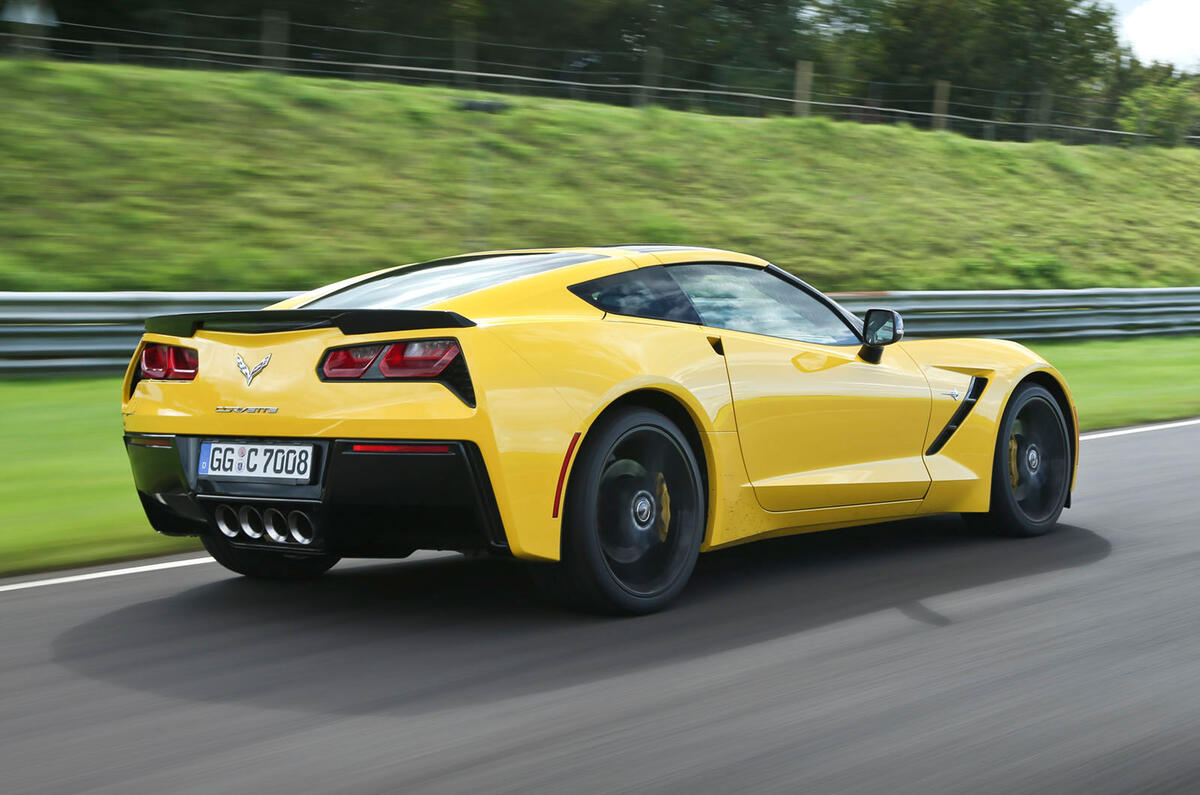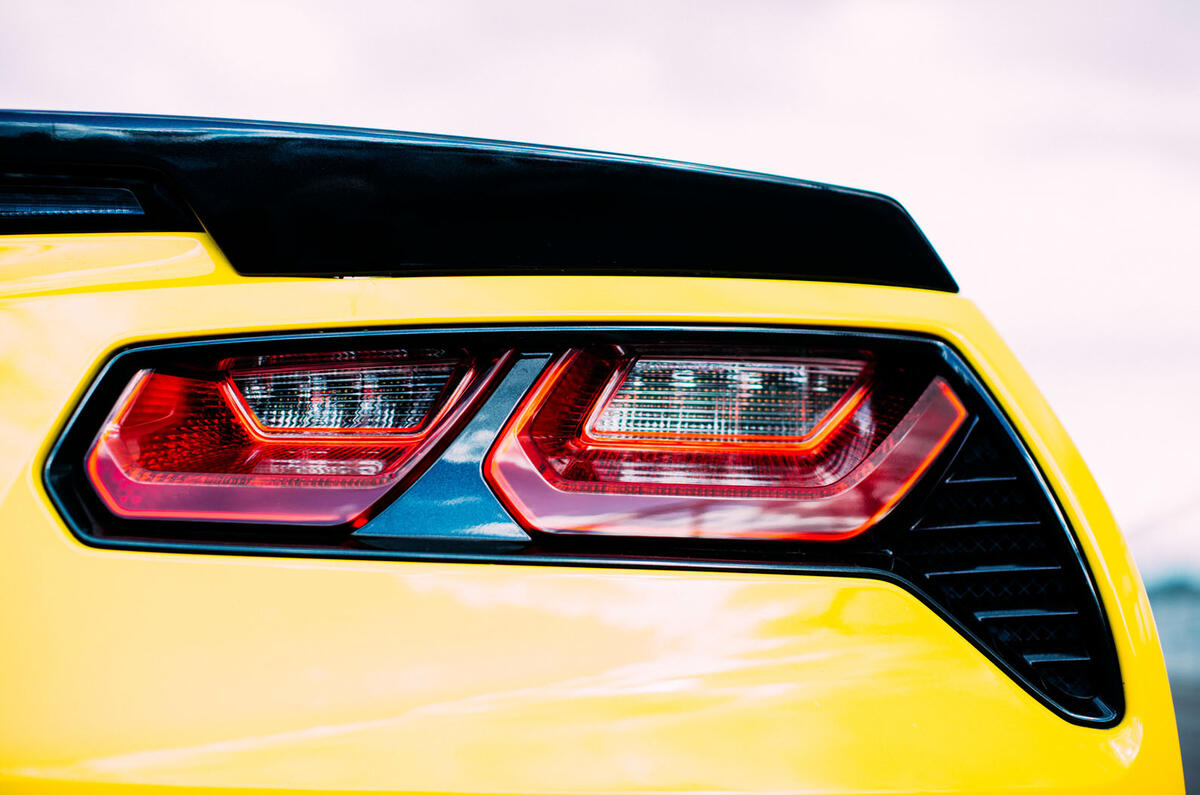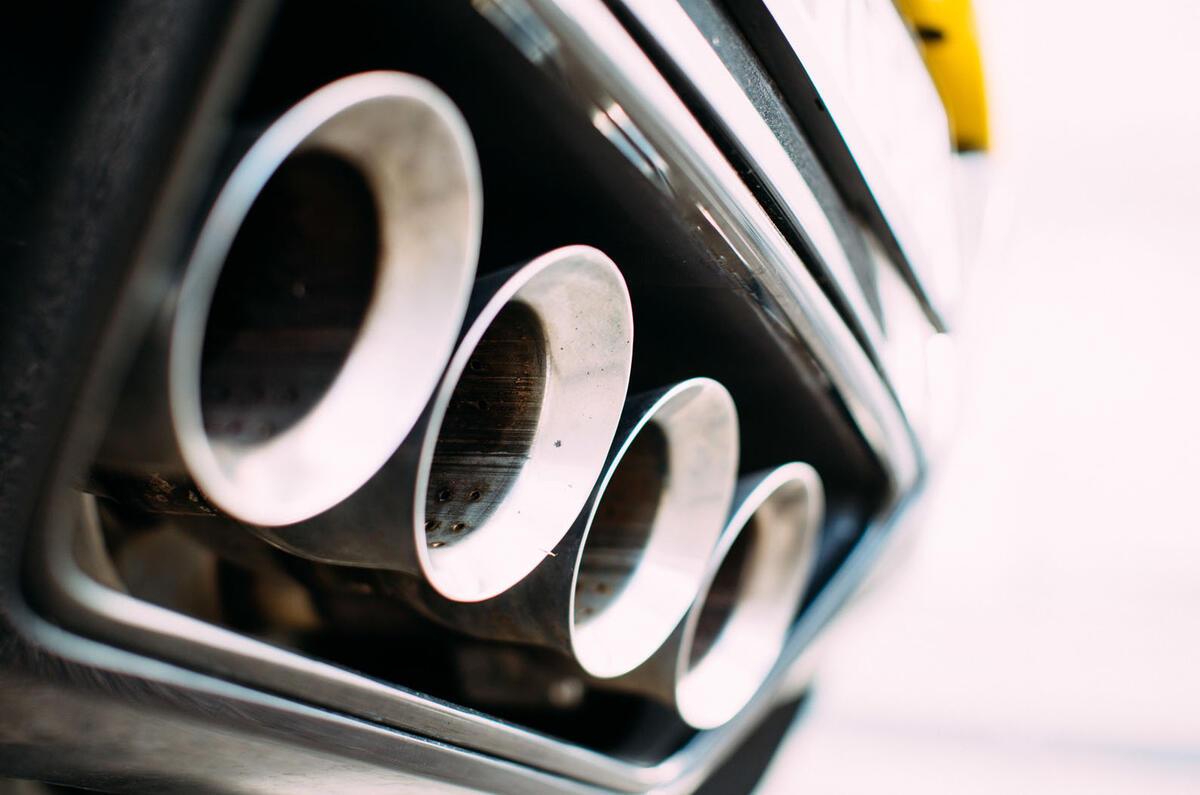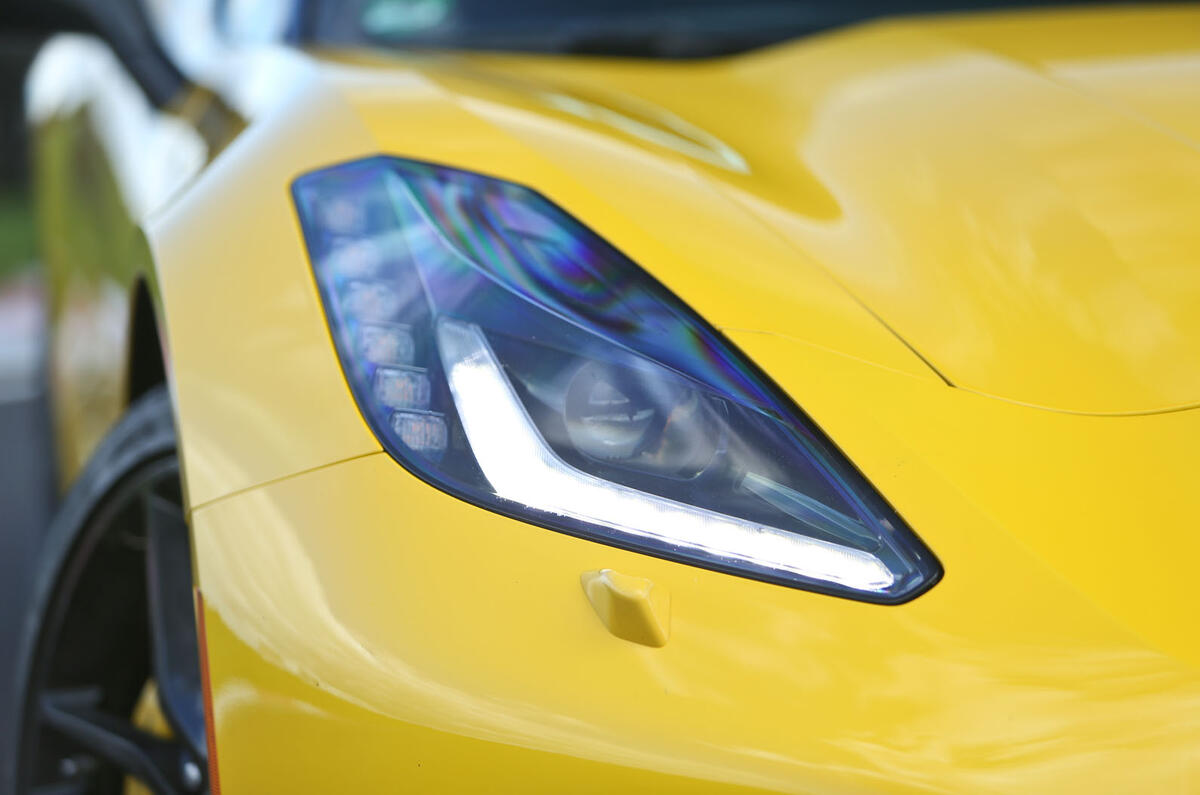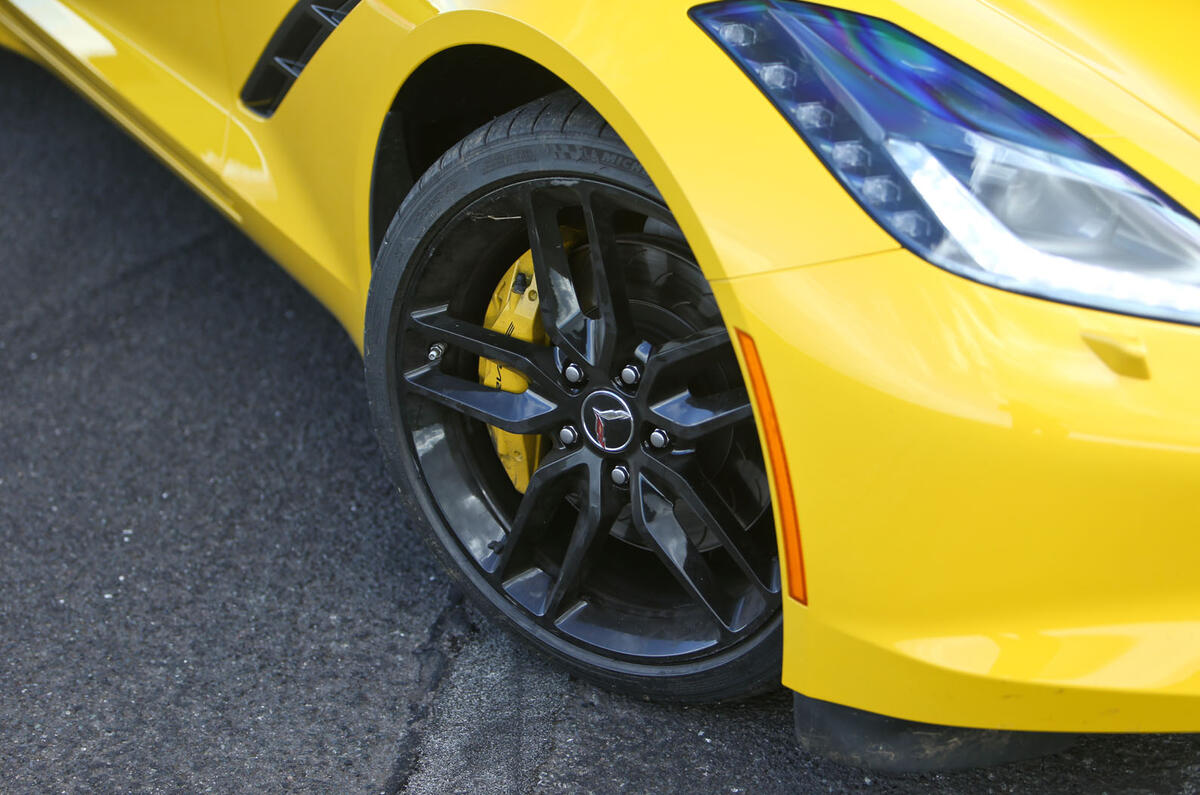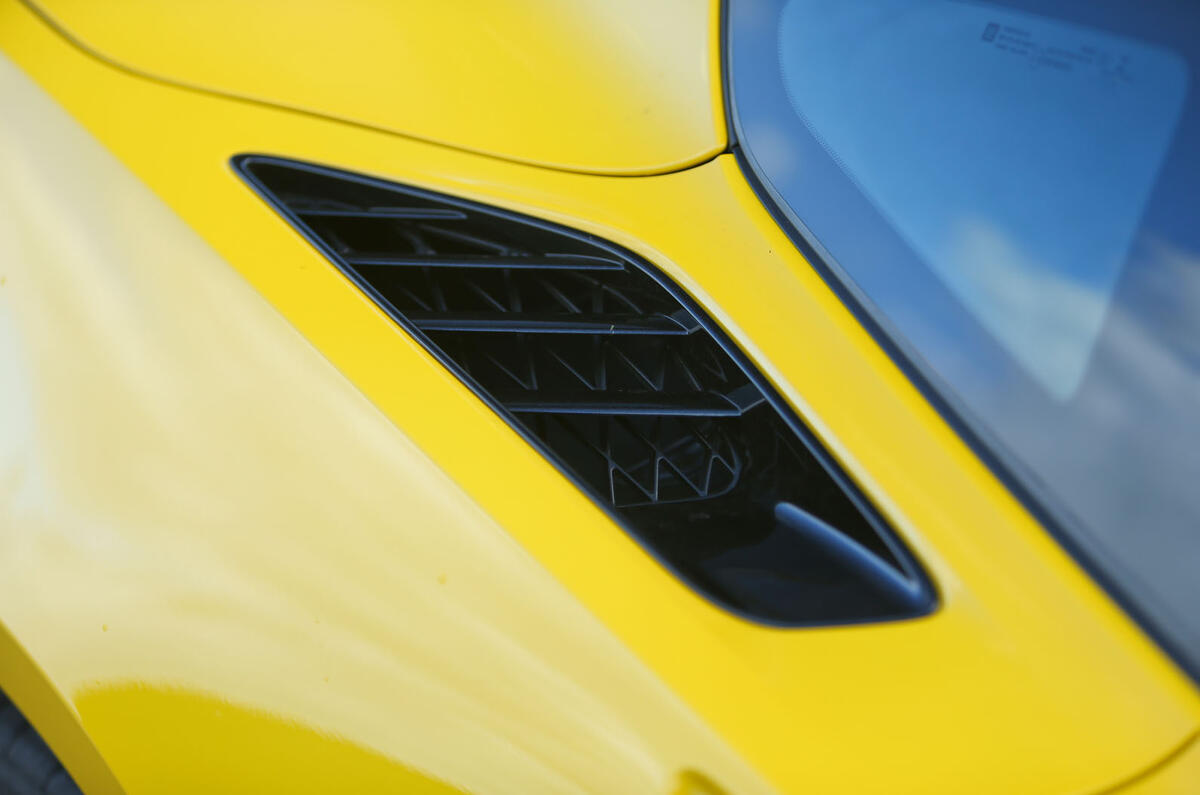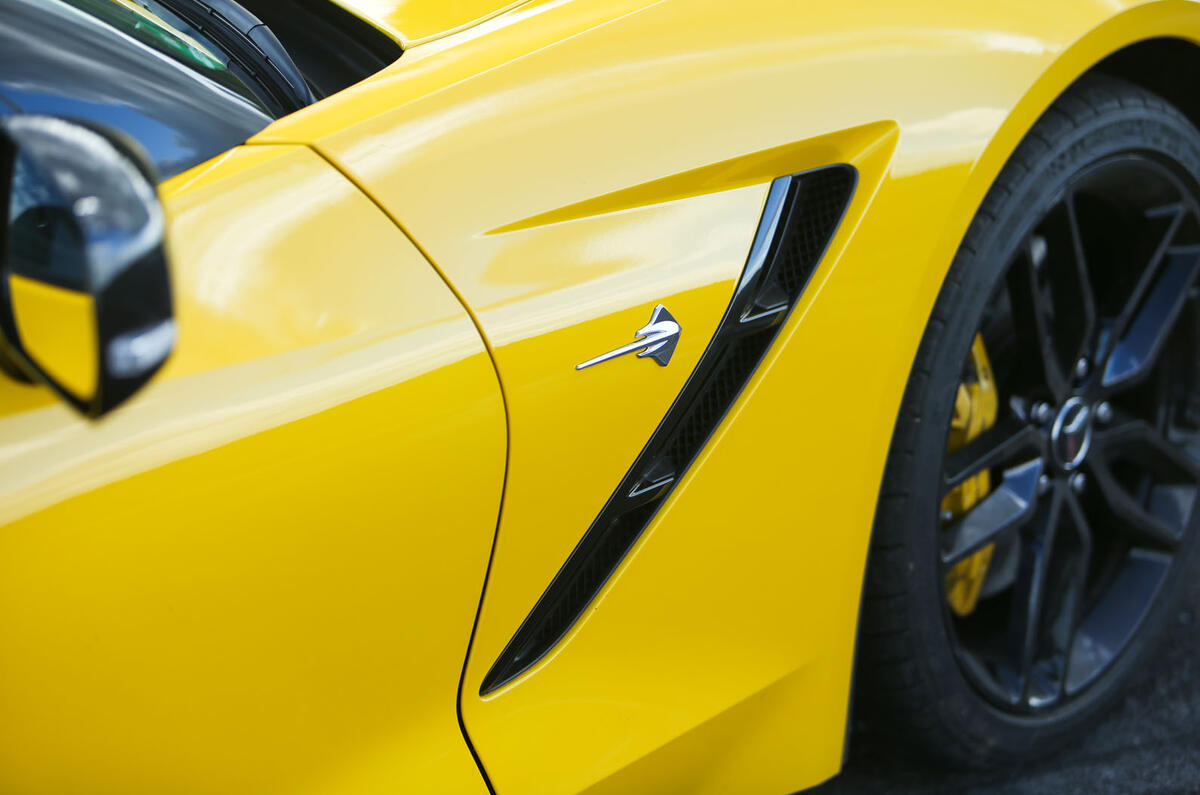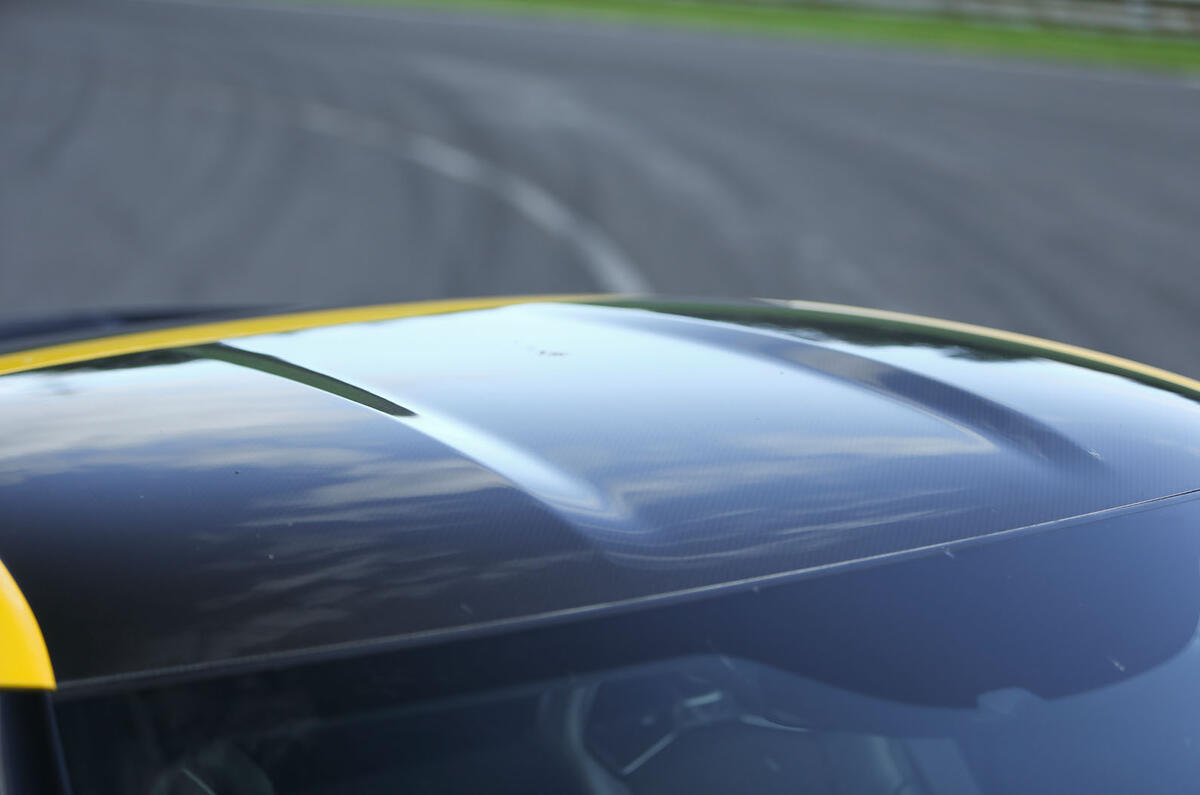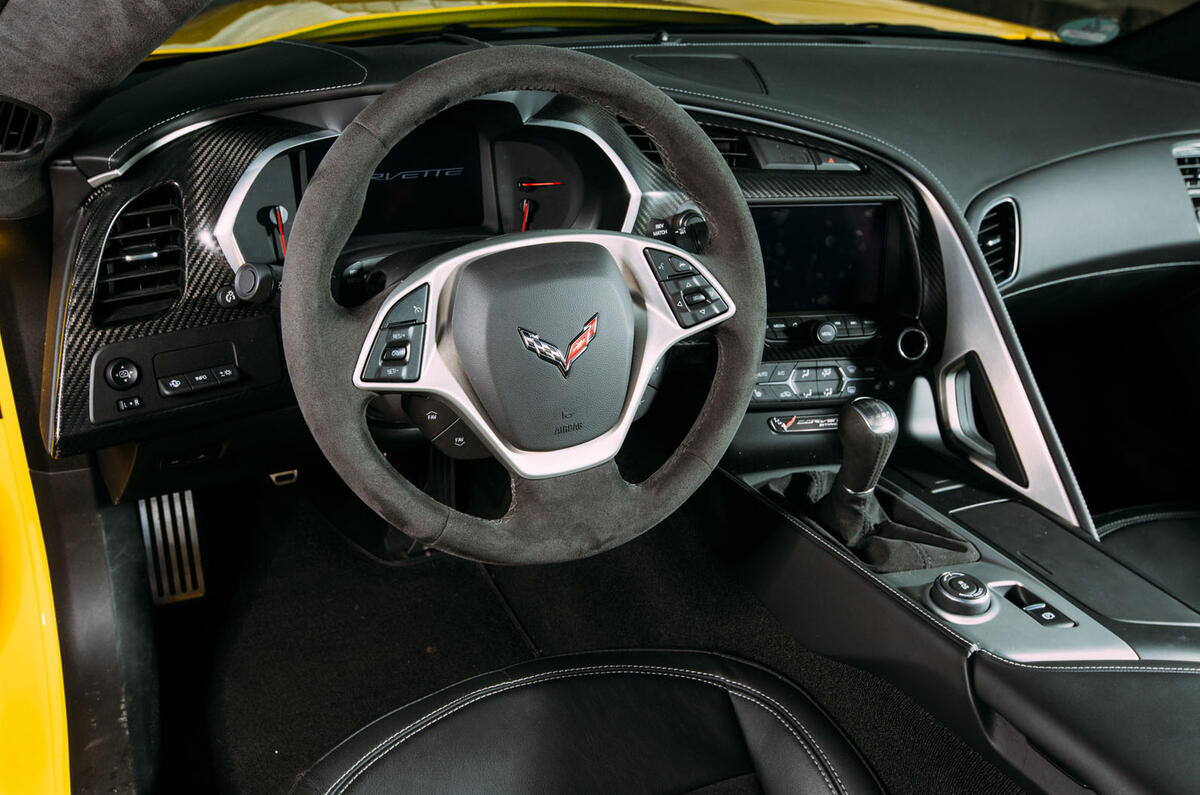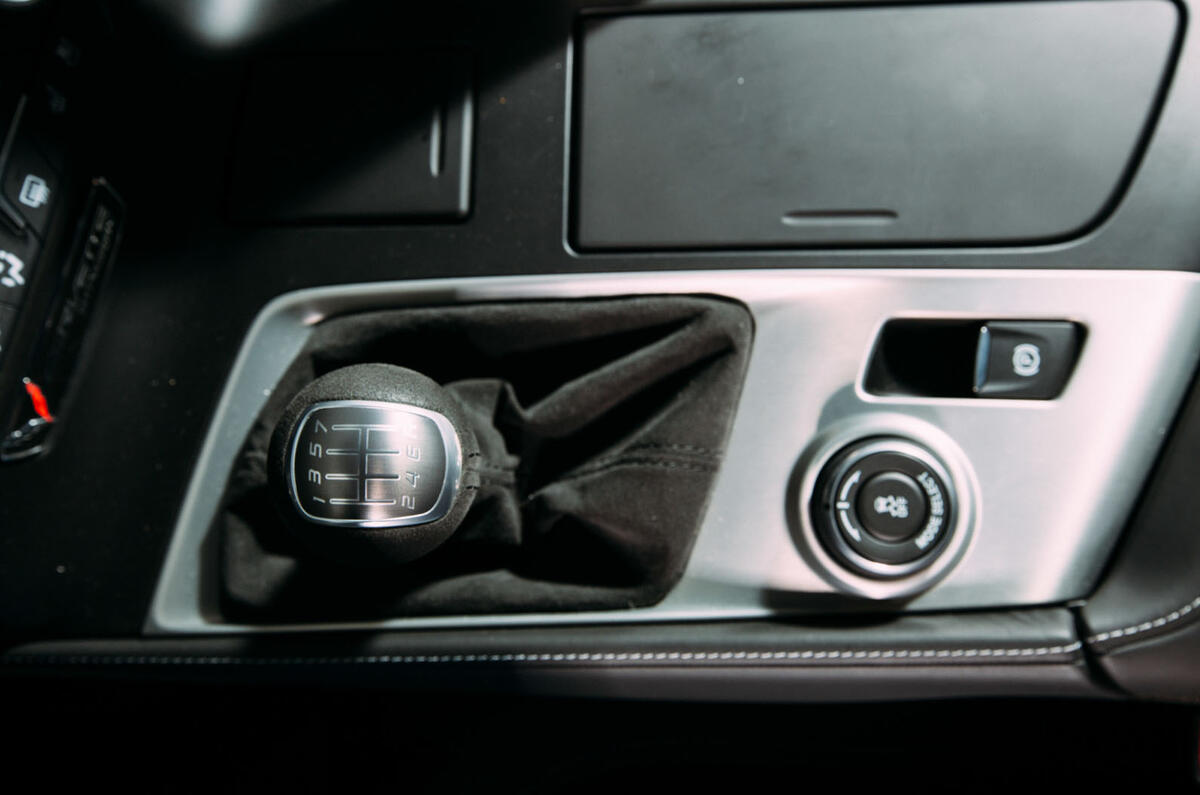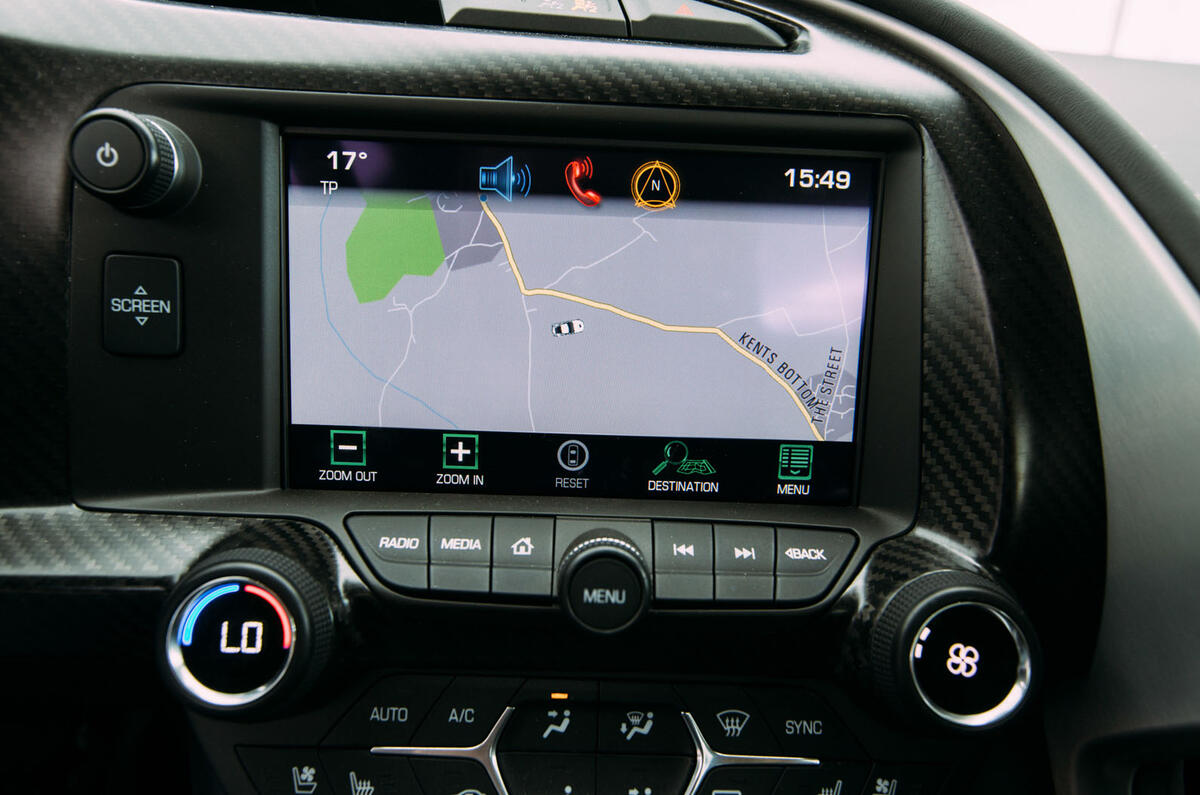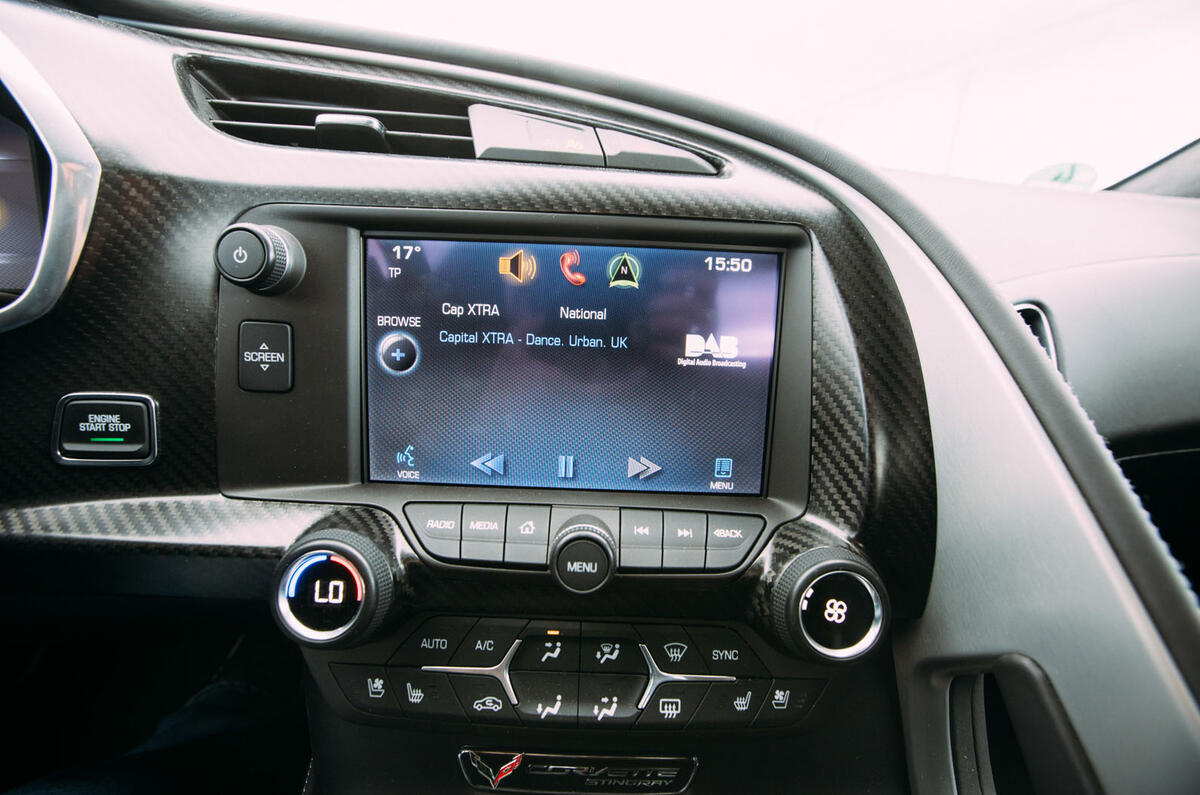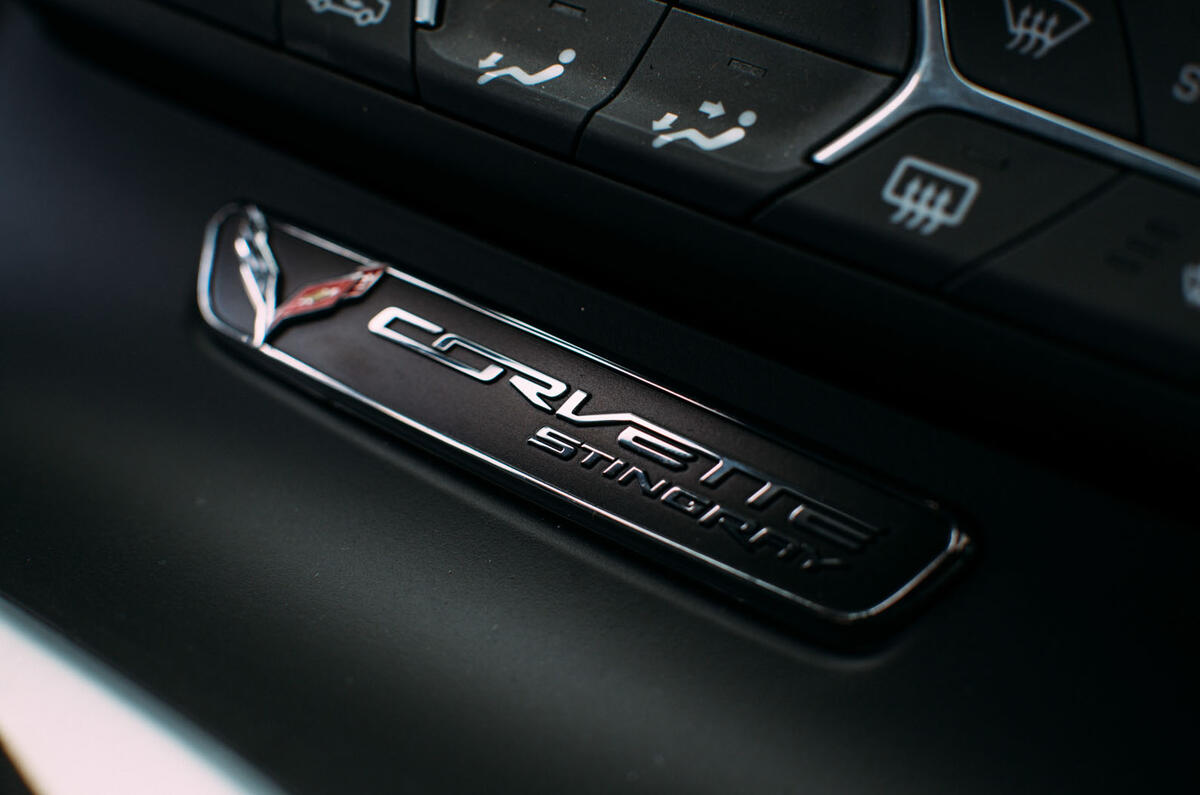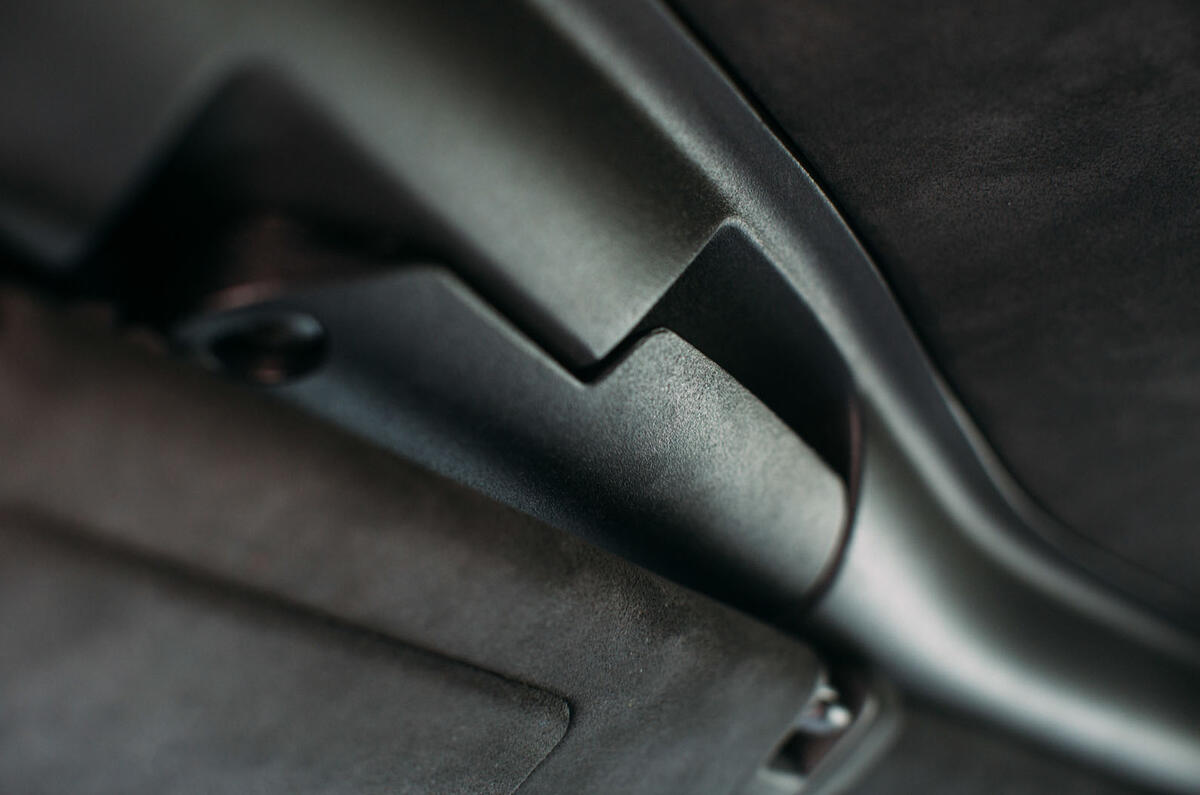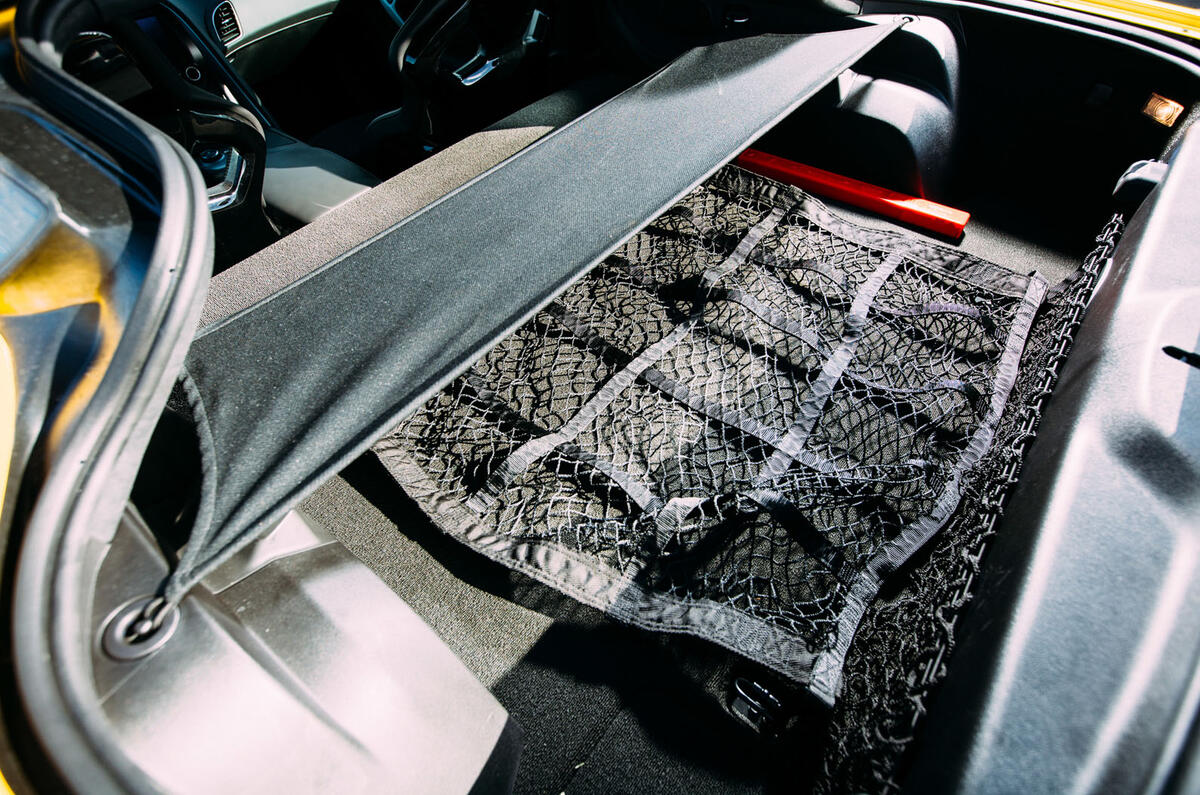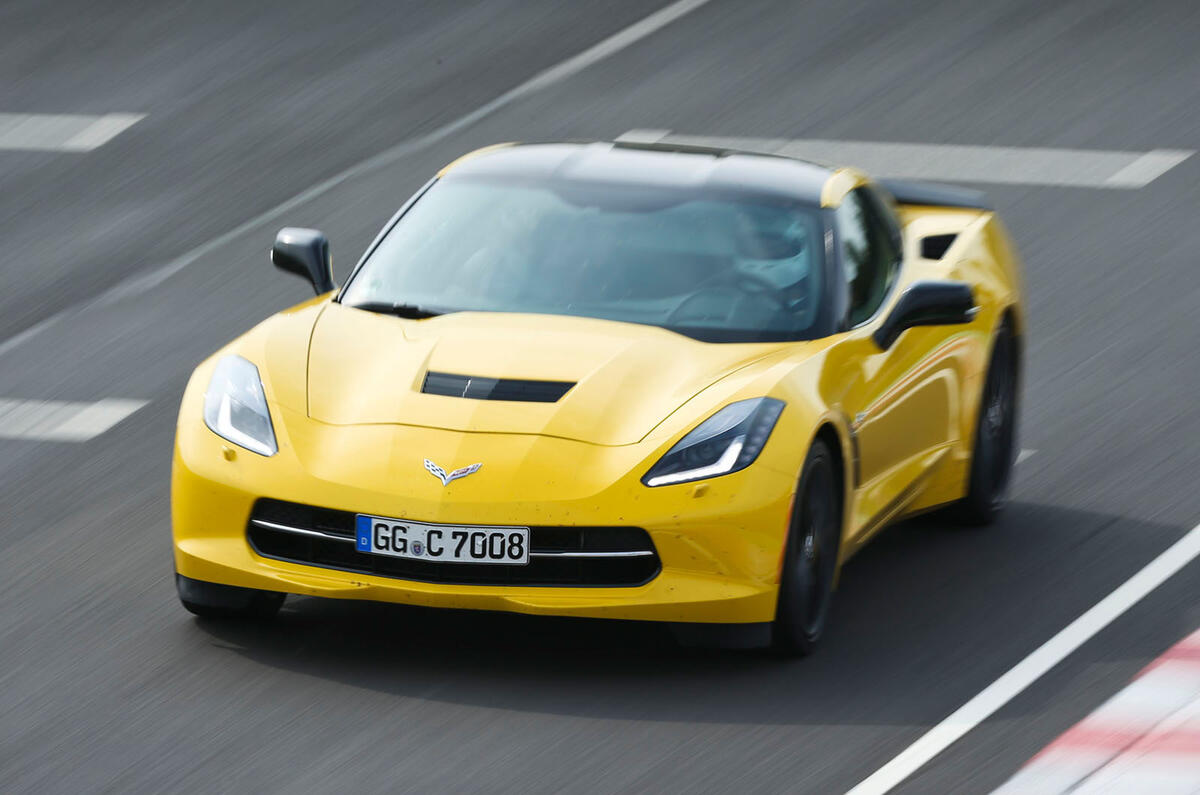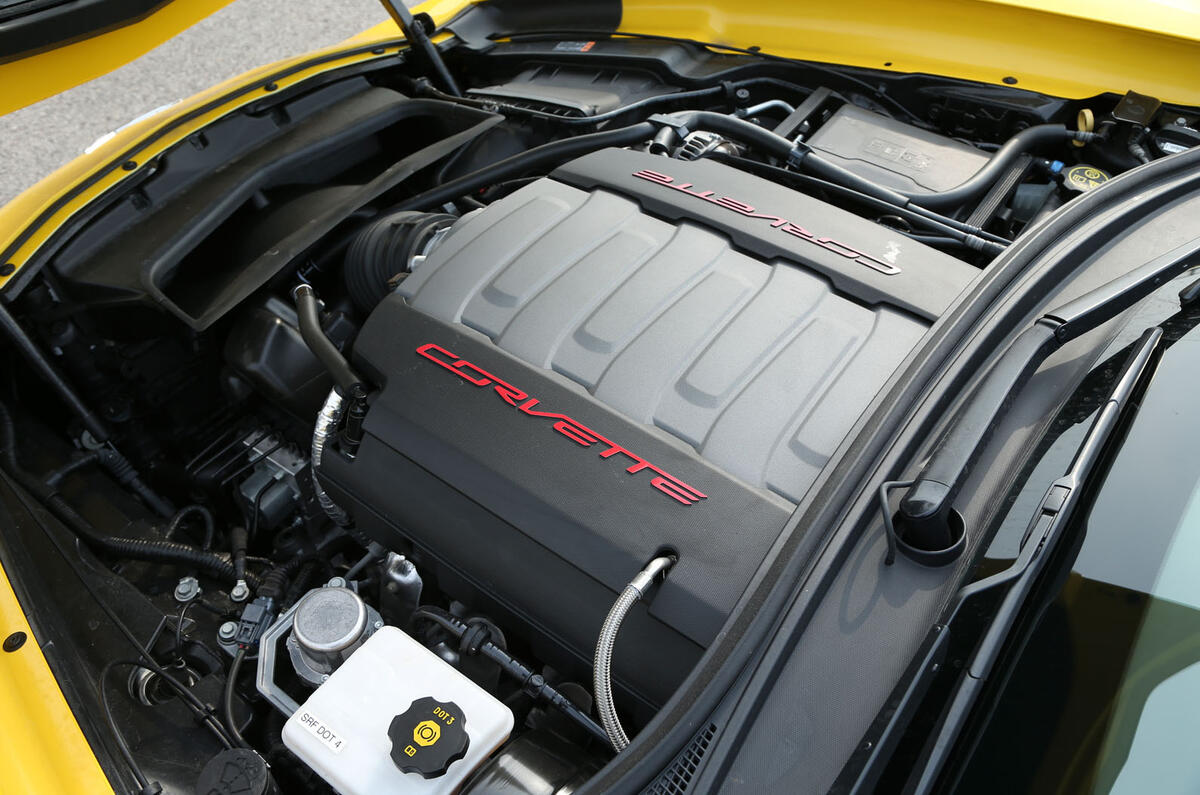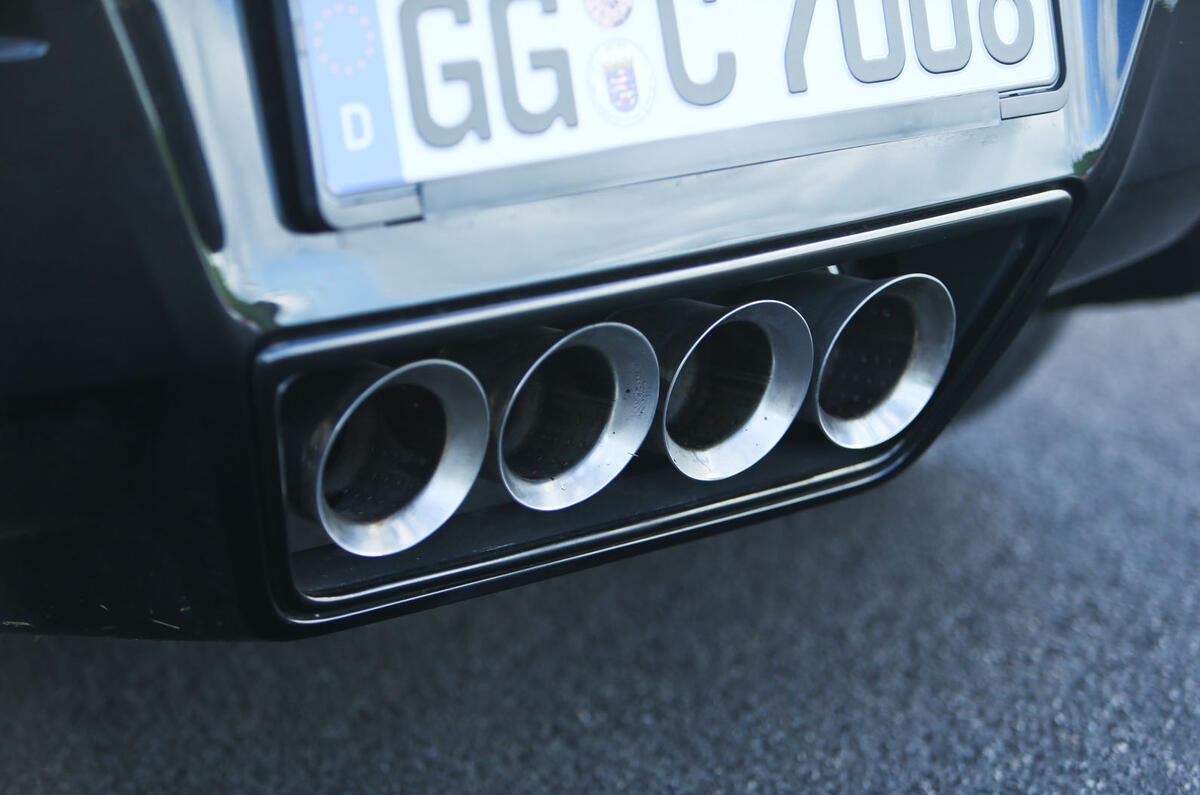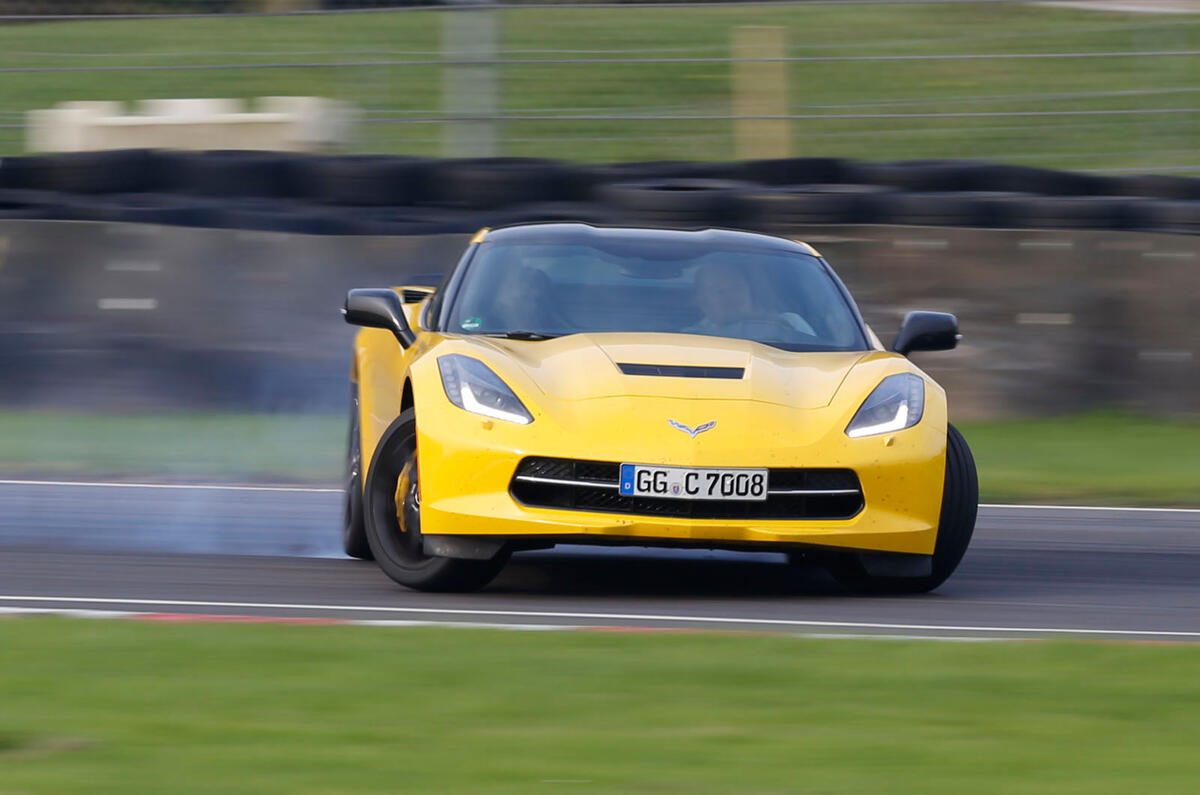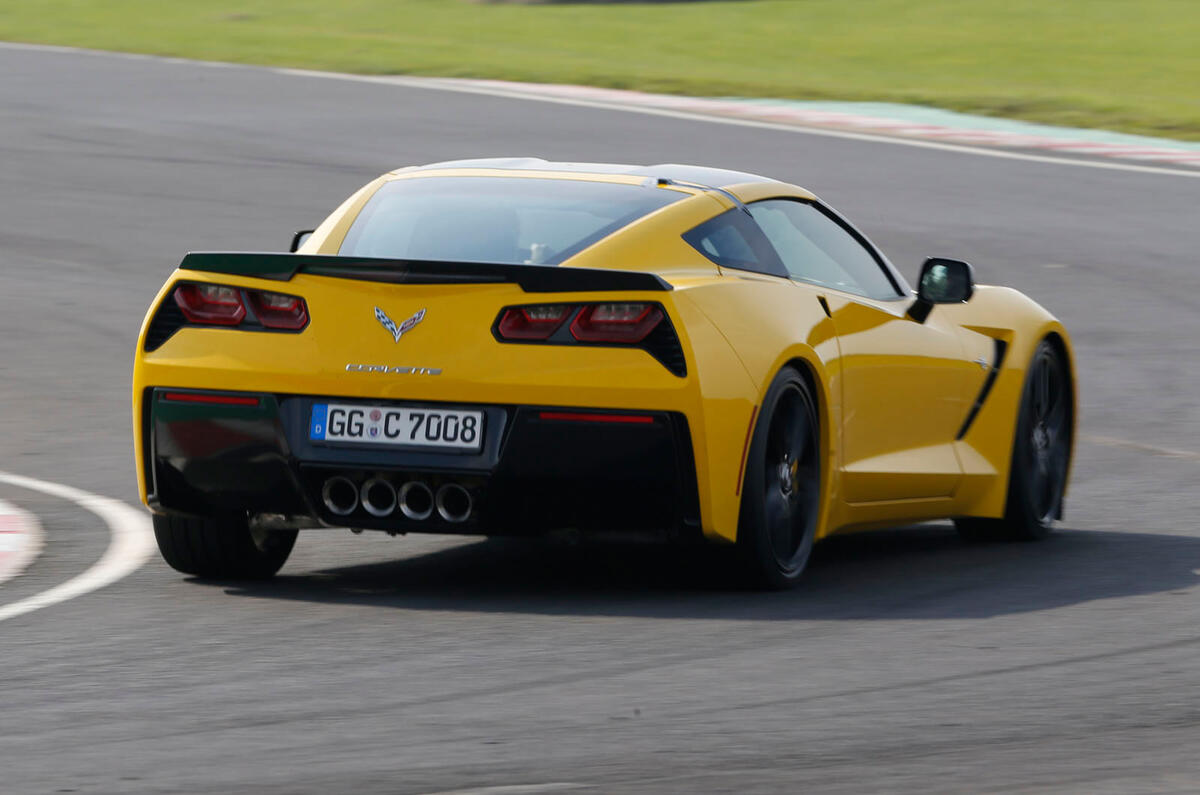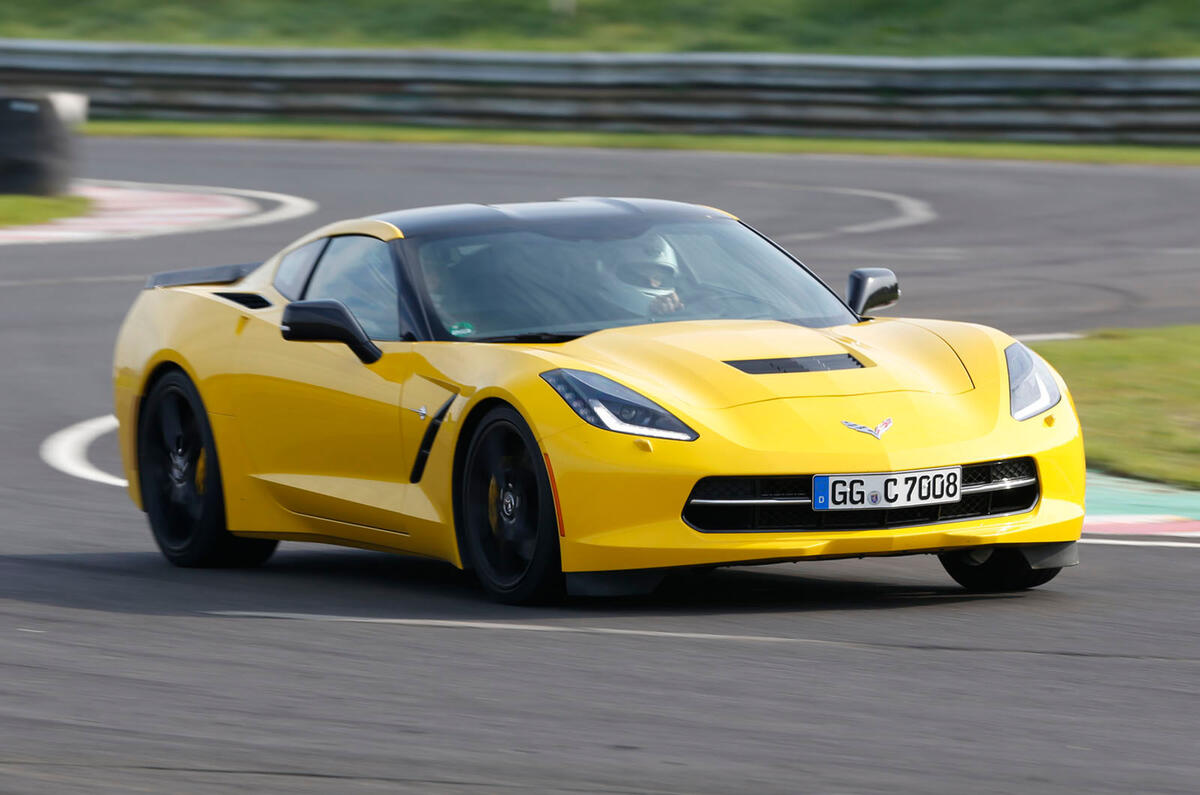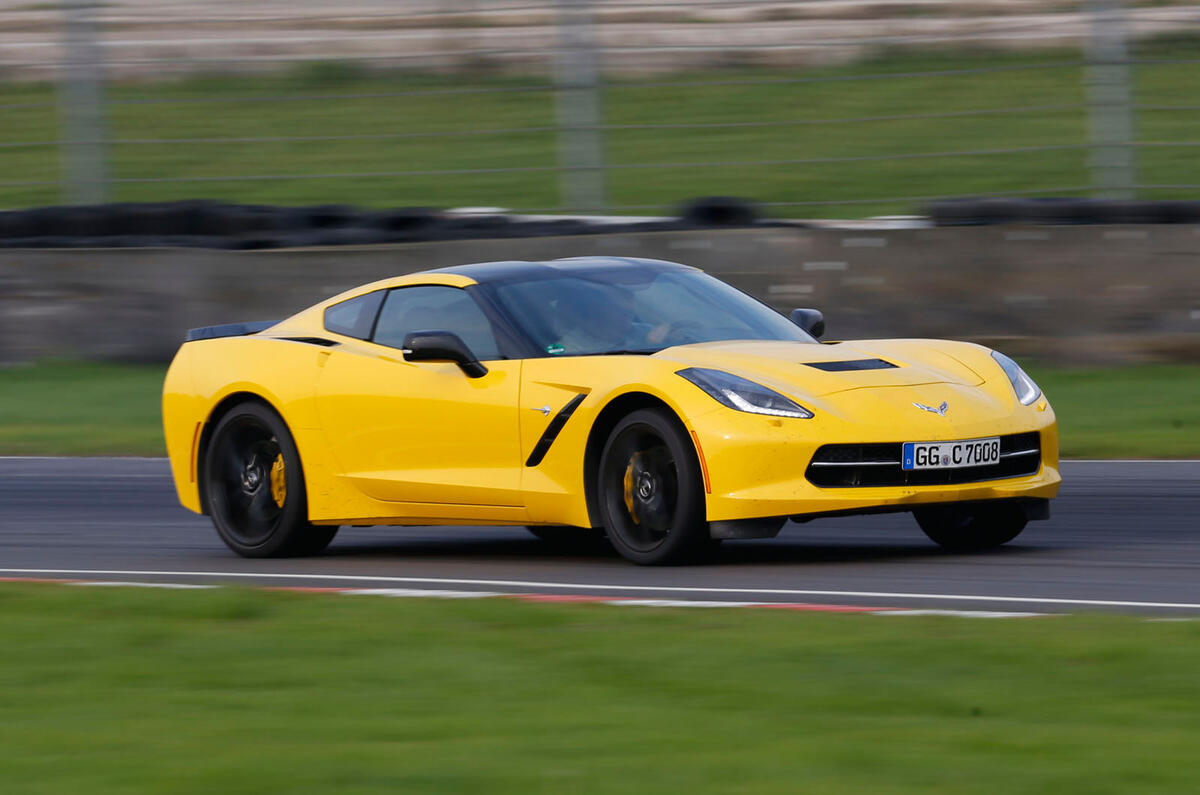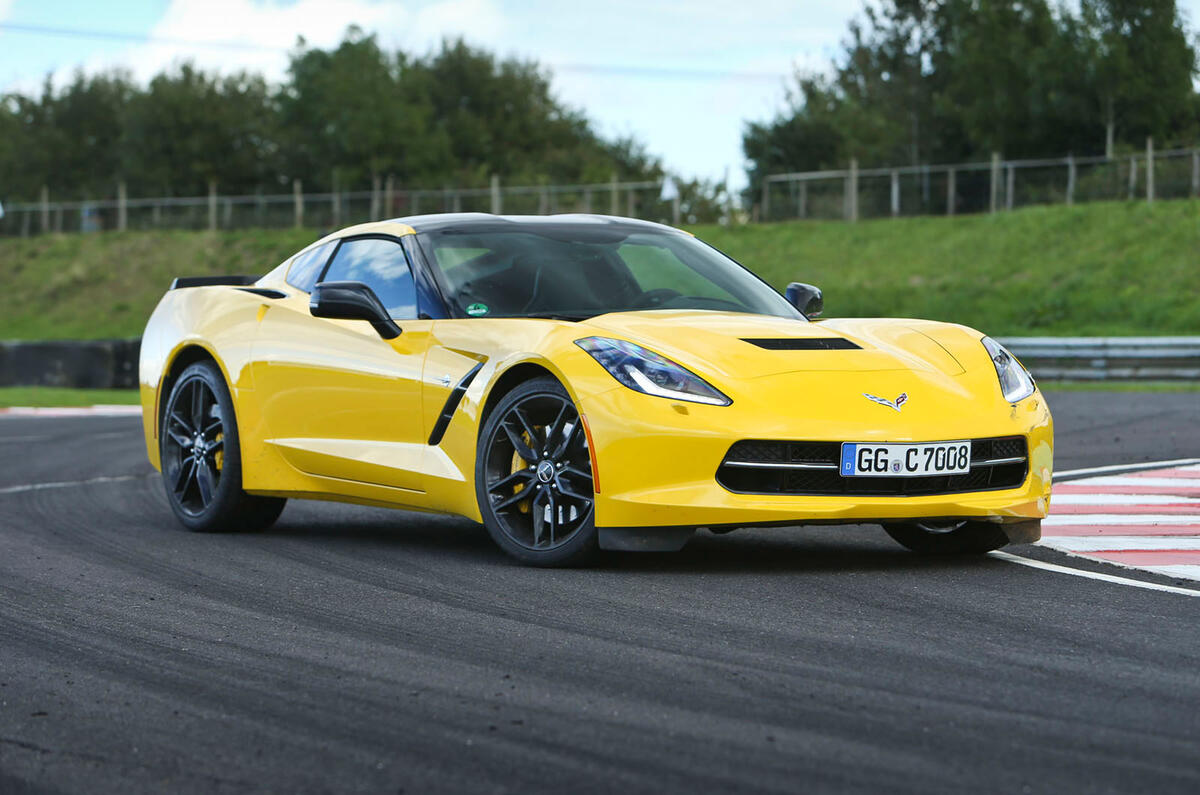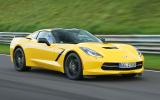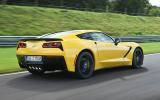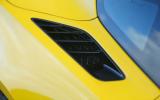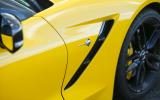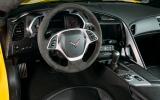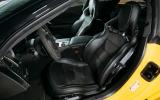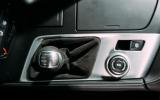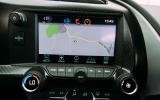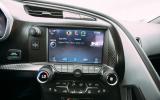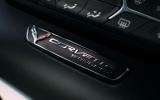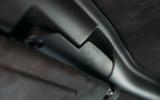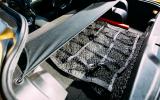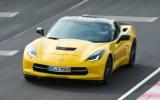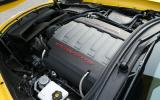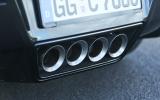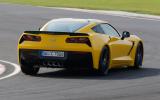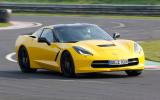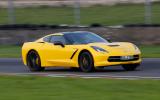As is Chevrolet’s recent theme, this Corvette has two seats and a boot that lies beneath a large hatch. And, as is a continued theme, the perceived quality and fit and finish have been improved, but only to a point that now feels half a decade or so behind that of Europe’s best.
Chevrolet reckons the interior design is jet fighter cockpit-inspired. That may well be a notion we put to bed, but there’s no denying things are focused towards the driver, who gets a fairly pleasing view.
There are clear dials, with an analogue speedo and fuel gauge flanking a digital display that’s configurable to show, at various sizes, the revcounter, a digital speed readout, navigation information, performance or trip computer readings. Some of that is replicated again in the standard, configurable head-up display.
That leaves the centre console’s touchscreen to deal with the entertainment and navigation. It’s controlled by both a knob and a few buttons beneath it, and by touch response on the screen itself. It’s one of the less intuitive systems we’ve used, but there’s no faulting the number of facilities it accommodates.
We had no problem pairing phones with it, but the graphical quality is average. Audio is good, though, and while the nav menus take some working out, the suggested routes are sensible and redirect quickly if you stray off them.
On the rather large transmission tunnel – where most of the chassis’ rigidity comes from – there’s a dial and push-switch combination that deals only with the modes for the suspension and transmission.
The driving position is good. The optional seats of our test car were more supportive than those we’re accustomed to in American cars, while the steering wheel is small.
The pedals and gear lever require some heft by modern standards, but none of our testers minded that. Happily, the Corvette’s boot is also respectably accommodating and wide at the back – because it’s American, and not accepting golf clubs is a sin. It’s shallow, though, but at least it’s lengthy.
There are only two trim levels to choose from - 2LT and 3LT for those opting for the C7 Stingray, while those opting for the sportier Grand Sport only have the choice of the 3LT trim or the limited Collector's Edition car. 2LT trimmed Corvettes come equipped with Chevy's Z51 Performance Package, which includes: magnetic adaptive suspension, performance active exhaust system, electronic slip differential, Brembo brakes and run-flat Michelin Pilot Super Sport tyres. There is also keyless entry and start, 360-degree camera system, cruise control, electrical adjustable and heated and ventilated seats, dual-zone climate control and a leather upholstery as standard. While dominating the centre console is Chevrolet's 8.0in touchscreen infotainment system complete with sat nav, smartphone integration, DAB radio, Bose audio system and GM's OnStar driver assistance and wi-fi system.
Upgrade to 3LT and you will find suede covered A-pillars and Nappa leather upholstery, while the 1000 Grand Sport Collector Edition models come with a unique Watkins Glen gray exterior and carbonfibre addendum on the outside, while inside is trimmed with Alcantara and Tension blue leather panels alongside numerous retro production number plaques.
The Grand Sport also is available with Chevrolet's Z07 Performance pack which adds tuned adaptive suspension, a more prominent rear spoiler, front winglets, gray brake calipers and carbonfibre splitter, diffusers and spoiler for a cool £10,350.


